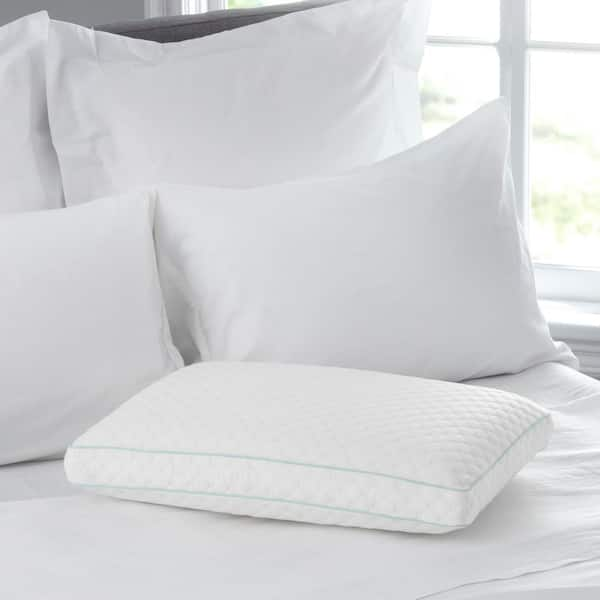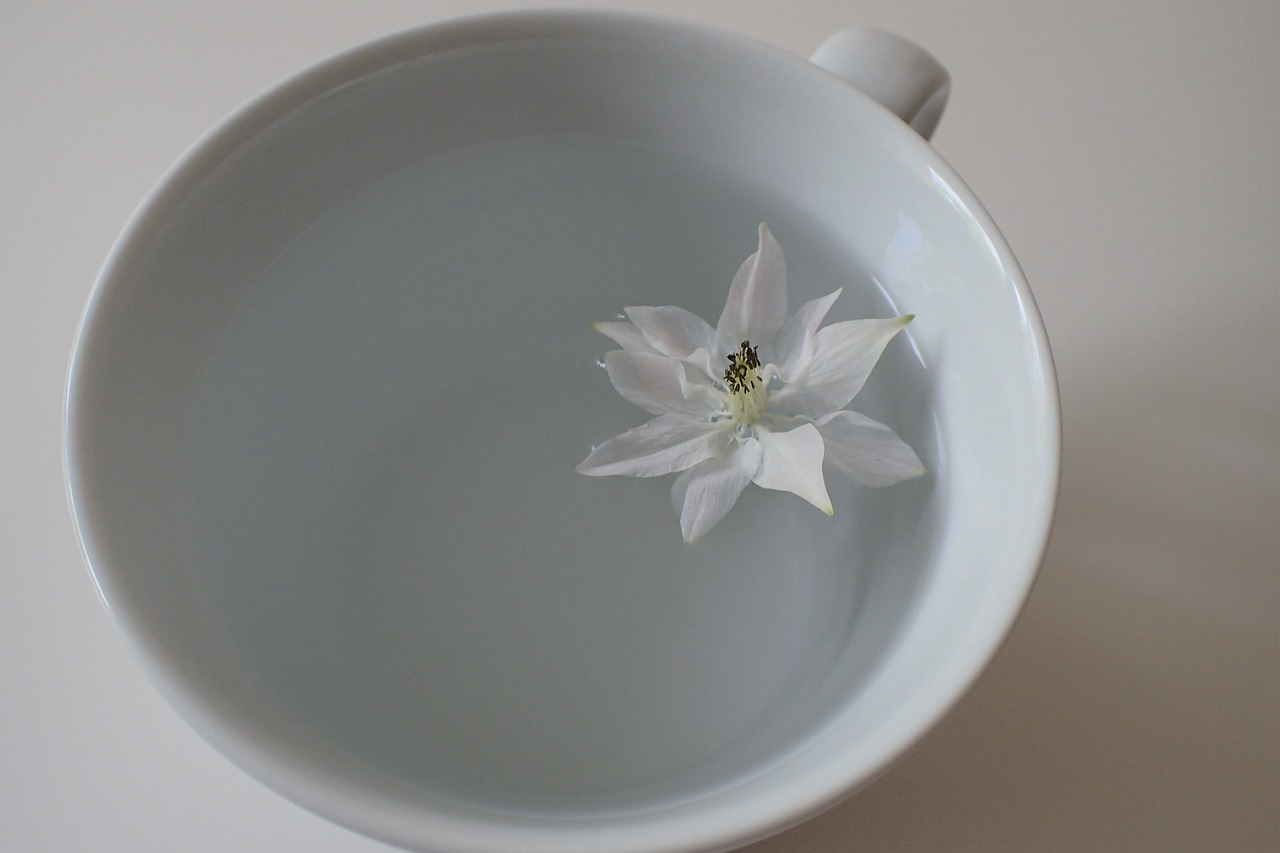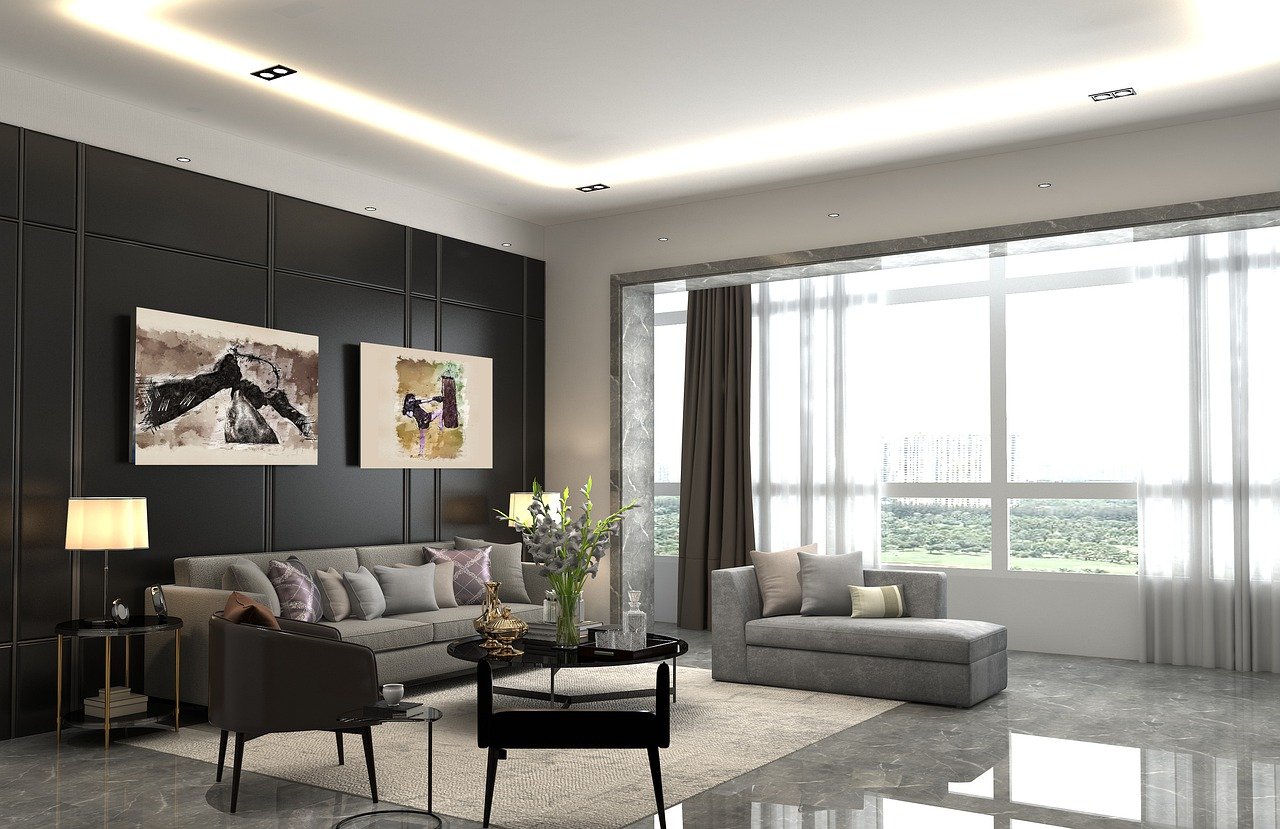Table of Contents
The bedroom is a sanctuary of rest and relaxation and the choice of textiles and fabrics plays a pivotal role in creating a comfortable and inviting atmosphere. From the sheets you sleep on to the curtains that frame your windows, the right materials can significantly enhance your comfort and overall well-being. In this article, we will explore the importance of choosing the right textiles and fabrics for your bedroom to create a haven of comfort and coziness.
The bedroom is more than just a room; it’s your personal sanctuary, a retreat where you unwind, rejuvenate and find solace from the demands of the day. Central to the ambiance of this sacred space is the selection of textiles and fabrics. These elements are not mere decorations but the foundation of comfort, coziness and well-being in your bedroom. Let’s delve deeper into the significance of making informed choices when it comes to bedroom textiles and fabrics:
The Bed: The Heart of the Bedroom: Your bed is undoubtedly the centerpiece of your bedroom and the textiles you choose for it are paramount. High-quality sheets made from natural fibers like cotton, linen or silk provide breathability, moisture-wicking properties and a luxurious feel against your skin. The right bedding can elevate your sleep experience, helping you achieve deeper, more restful slumber.
Thermal Comfort: Different seasons call for different bedding materials. In colder months, opt for heavier fabrics like flannel or brushed cotton to trap warmth. During warmer seasons, lightweight options such as percale cotton or airy linen ensure that you stay cool and comfortable throughout the night.
Pillows and Cushions: The choice of pillowcases and cushion covers can enhance both the visual appeal and comfort of your bedroom. Soft, hypoallergenic pillowcases contribute to a soothing night’s sleep, while decorative cushions in complementary fabrics can infuse personality into your space.
Window Dressings: Curtains or blinds not only frame your windows but also regulate light and privacy. Heavier fabrics like velvet or blackout curtains can keep unwanted light out, promoting a peaceful atmosphere. Sheer or light-filtering materials can provide a soft, diffused glow during the day.
Rugs and Carpets: Bedroom rugs not only add a layer of warmth underfoot but also contribute to sound insulation. Soft, plush carpets or natural fiber rugs like jute or sisal can create a cozy landing as you step out of bed.
Upholstery Choices: If your bedroom has seating or upholstery, consider materials like microfiber or velvet for a touch of luxury and comfort. Upholstered headboards, chairs or ottomans in bedroom-appropriate fabrics can provide additional areas of relaxation.
Allergen Considerations: If you have allergies, selecting hypoallergenic textiles and fabrics is crucial. These materials are specially designed to resist allergens like dust mites and can greatly contribute to better sleep quality and respiratory health.
Sensory Experience: Your choice of textiles can also impact your sensory experience. The tactile pleasure of soft, silky sheets or the coziness of a chunky-knit blanket can create a sensory haven, enhancing your emotional well-being.
Maintenance and Durability: Consider the ease of care and durability of your textiles. Bedding and fabrics that are easy to clean and maintain will ensure that your bedroom remains inviting and comfortable over the long term.
Reflecting Your Style: Ultimately, your bedroom textiles should reflect your personal style and aesthetic preferences. Whether you prefer classic, romantic, minimalist or eclectic designs, there are textiles and fabrics that can align with your vision and create a cohesive and harmonious space.
In conclusion, the textiles and fabrics you choose for your bedroom are not just utilitarian; they are integral to the creation of a haven where rest and relaxation are paramount. By selecting materials that align with your comfort, seasonal needs and personal style, you can curate a bedroom that envelops you in a cocoon of well-being and serenity. It’s an investment in your quality of life, as the right textiles can transform your bedroom into the ultimate refuge for both body and soul.
To delve further into this matter, we encourage you to check out the additional resources provided here: The 5 Best Reusable Face Masks of 2023 | Reviews by Wirecutter
Bedding: The Foundation of Comfort
The quality of your bedding directly impacts your sleep quality. When it comes to sheets and duvet covers, opt for natural materials like cotton or linen. Cotton is soft, breathable and easy to maintain, while linen offers a crisp, airy feel and becomes softer with each wash. Both materials wick moisture away from your body, ensuring a comfortable sleep temperature.
Investing in a high thread count for your sheets can also enhance comfort. Look for thread counts between 300 and 600 for a luxurious, soft feel. Consider the weight of your duvet or comforter as well; lighter options are ideal for warmer months, while heavier ones provide extra warmth in winter.
To expand your knowledge on this subject, make sure to read on at this location: Best Organic, Natural, & Non-Toxic Mattresses of 2023 | Sleep …

Pillows: Personalized Comfort
Pillows are a crucial part of your bedding ensemble. The right pillow provides proper support and comfort for your head and neck, promoting a good night’s sleep. Choose pillow materials that align with your personal preferences:
Certainly, here’s an extended idea:
“Pillows are indeed a pivotal component of your bedding ensemble and the role they play in ensuring a good night’s sleep cannot be overstated. The right pillow goes beyond just providing a comfortable place for your head; it offers essential support to your neck and shoulders, helping maintain proper spinal alignment and ensuring a restful slumber. When selecting the perfect pillow, it’s important to consider various factors, including the materials that align with your personal preferences:
Filling Material: Pillows come in a variety of filling materials, each with its unique characteristics.
Memory Foam: Memory foam pillows conform to the shape of your head and neck, offering excellent support and pressure relief. They are particularly beneficial for those with neck or shoulder pain.
Latex: Latex pillows provide a combination of support and responsiveness. They are hypoallergenic, resistant to dust mites and have a longer lifespan compared to other materials.
Feather or Down: Feather and down pillows are soft and moldable, offering a plush and luxurious feel. They are great for those who prefer a fluffier pillow that can be adjusted to their liking.
Synthetic Fill: Synthetic pillows mimic the feel of down but are hypoallergenic and more budget-friendly. They are suitable for individuals with allergies.
Polyester: Polyester pillows are lightweight and easy to maintain. They are often affordable and a good choice for guest bedrooms or for those on a budget.
Hybrid: Some pillows combine materials, such as memory foam and gel, to provide a balance of support and cooling properties. These can be ideal for individuals who tend to sleep hot.
Sleeping Position: Your preferred sleeping position should also influence your choice of pillow.
Back Sleepers: Back sleepers benefit from medium-firm pillows that support the natural curve of the neck.
Side Sleepers: Side sleepers require firm pillows to fill the gap between the neck and shoulder, maintaining proper alignment.
Stomach Sleepers: Stomach sleepers need soft, thin pillows to prevent excessive strain on the neck and spine.
Allergies and Sensitivities: If you have allergies or sensitivities, consider hypoallergenic pillow options that resist dust mites, mold and other allergens.
Maintenance: Think about the ease of care. Some pillows are machine-washable, while others may require special care like spot cleaning or professional cleaning.
Durability: Assess the longevity of the pillow material. Natural materials like down and feather may require more frequent replacement compared to memory foam or latex.
Temperature Regulation: If you tend to sleep hot, look for pillows with cooling features, such as gel-infused memory foam or moisture-wicking covers.
Ultimately, the right pillow is a personal choice that should align with your specific needs and preferences. Investing in a quality pillow that suits your sleeping style can significantly enhance the quality of your sleep and contribute to your overall well-being. Take the time to explore different options, test them out and prioritize your comfort for a restful night’s sleep.”
To expand your knowledge on this subject, make sure to read on at this location: Options & Upgrades | La-Z-Boy

Down and Feather
These materials offer a plush, luxurious feel and excellent support. They can be fluffed and shaped to your liking.
When it comes to choosing materials for your furniture and bedding, the options are diverse, but some stand out for their exceptional qualities. Materials like high-quality down, memory foam and natural latex are prime examples. They not only offer a plush and luxurious feel but also provide excellent support, ensuring that your comfort is a top priority. Let’s delve into the benefits of these materials and how they can be tailored to your preferences:
**1. High-Quality Down: High-quality down is renowned for its unmatched softness and insulation properties. When used in pillows and duvets, it creates a cloud-like, cozy sensation that envelops you in warmth and comfort. Down-filled items are incredibly breathable, making them ideal for temperature regulation throughout the year. What’s more, they are easy to fluff and shape to your liking, ensuring that your bedding remains fluffy and inviting.
**2. Memory Foam: Memory foam has revolutionized the comfort industry with its ability to contour to your body’s shape. Whether it’s a mattress or a cushion, memory foam provides targeted support by responding to your body’s heat and pressure points. This material offers exceptional comfort for a variety of sleep preferences, helping to alleviate pressure on joints and promote restful sleep. Its resilience and durability ensure that it maintains its shape and support over time.
**3. Natural Latex: Natural latex is prized for its eco-friendly properties and its ability to provide both comfort and support. Derived from rubber trees, it’s a sustainable and resilient material. Latex mattresses and pillows offer excellent back support and pressure relief, making them ideal for those who prioritize spine alignment and sleep quality. They are also hypoallergenic and resistant to dust mites, providing a healthier sleep environment.
**4. Customizable Comfort: One of the standout features of these materials is their adaptability. You can customize your sleep experience to suit your preferences. For instance, memory foam mattresses often come in varying levels of firmness, allowing you to choose the one that best suits your comfort needs. Down pillows can be fluffed to the desired loft, providing the perfect support for your head and neck. Natural latex mattresses can also be customized with different layers to achieve the right balance of softness and support.
**5. Durability and Longevity: Investing in furniture and bedding made from these high-quality materials is a wise choice for the long term. They are designed to withstand the test of time, maintaining their plushness and support for years. This not only ensures your ongoing comfort but also represents a sustainable choice, reducing the need for frequent replacements.
**6. A Luxurious Feel: The luxurious feel of these materials adds an element of indulgence to your home. Whether you’re sinking into a memory foam mattress, snuggling under a down-filled duvet or resting your head on a natural latex pillow, the sensation is one of opulence and relaxation.
In conclusion, selecting furniture and bedding materials like high-quality down, memory foam and natural latex elevates your comfort and overall well-being. Their plushness and support, combined with the ability to customize them to your liking, create a personalized experience that enhances your quality of life. These materials not only provide a luxurious feel but also deliver long-lasting value, making them a worthwhile investment in your home and your everyday comfort.
Additionally, you can find further information on this topic by visiting this page: 15 Most Comfortable Couches & Sofas of 2023

Memory Foam
Memory foam pillows conform to the contours of your head and neck, providing exceptional support and pressure relief.
Memory foam pillows are a revolution in sleep comfort, as they offer a level of support and pressure relief that can make a significant difference in your overall sleep quality. Here’s an in-depth look at how memory foam pillows work and why they are so highly regarded:
1. Personalized Support: Memory foam pillows are designed to respond to your body’s heat and pressure, allowing them to conform to the unique contours of your head and neck. This personalized support ensures that your spine remains in proper alignment throughout the night, reducing the risk of waking up with a stiff neck or sore muscles.
2. Pressure Relief: One of the standout features of memory foam is its ability to distribute weight evenly. By doing so, it alleviates pressure points that can cause discomfort and pain. Whether you’re a side, back or stomach sleeper, memory foam pillows cradle your head and neck, providing consistent support and minimizing pressure on sensitive areas.
3. Motion Isolation: Memory foam’s ability to absorb and isolate motion is a boon for couples who share a bed. If your partner tends to toss and turn during the night, a memory foam pillow can help you sleep undisturbed, as it absorbs the motion, preventing it from transferring across the pillow’s surface.
4. Hypoallergenic Properties: Many memory foam pillows are hypoallergenic, which means they resist common allergens such as dust mites and mold. This feature is especially beneficial for allergy sufferers, as it can contribute to a healthier sleep environment.
5. Durability: High-quality memory foam pillows are known for their durability. They maintain their shape and support for an extended period, reducing the need for frequent replacement and saving you money in the long run.
6. Versatility: Memory foam pillows come in various shapes and sizes, catering to different sleep preferences. Whether you prefer a traditional contour pillow, a wedge pillow for elevation or a specialty design for specific needs like snoring or acid reflux, there’s likely a memory foam option that suits your requirements.
7. Temperature Regulation: Some memory foam pillows are engineered with advanced cooling technologies to mitigate the heat retention often associated with traditional memory foam. These options help regulate temperature, ensuring a cooler and more comfortable sleep experience.
Incorporating a memory foam pillow into your sleep routine can be a game-changer, providing not only exceptional comfort but also contributing to your overall well-being. By reducing pressure points, promoting proper spinal alignment and offering personalized support, memory foam pillows help you wake up feeling refreshed and ready to take on the day. So, consider making the switch to memory foam and unlock the potential for better sleep and enhanced comfort.
Additionally, you can find further information on this topic by visiting this page: Best Affordable Memory Foam Mattress In A Box Sale Online

Latex
Latex pillows are hypoallergenic, breathable and supportive, making them an excellent choice for those with allergies or sensitivities.
Latex pillows are indeed a remarkable choice when it comes to bedding options, especially for individuals who prioritize comfort, health and sleep quality. Here’s a more in-depth look at the benefits of latex pillows:
1. Hypoallergenic Properties: Latex pillows are naturally hypoallergenic, which means they resist dust mites, mold and other common allergens. This makes them an ideal choice for people who suffer from allergies or have sensitivities to these irritants. With latex pillows, you can sleep more peacefully, knowing that your bedding won’t exacerbate your allergies.
2. Breathability: Latex is known for its exceptional breathability. The unique cell structure of latex foam allows air to circulate freely, preventing heat and moisture buildup. This breathability keeps you cool and comfortable throughout the night, promoting a more restful and sweat-free sleep experience, especially during hot summer nights.
3. Supportive Comfort: Latex pillows are renowned for their firm yet responsive support. They contour to the shape of your head and neck, providing excellent support to your cervical spine. This feature is particularly beneficial for those who suffer from neck pain, headaches or sleep disorders like sleep apnea. Latex pillows help align your spine, reduce pressure points and promote better spinal health.
4. Durability: Latex pillows are built to last. Unlike traditional pillows that tend to flatten and lose their shape over time, latex pillows maintain their supportive structure for many years. This durability ensures that you won’t need to replace your pillow frequently, making it a cost-effective long-term investment in your sleep quality.
5. Eco-Friendly Option: Latex is a sustainable and environmentally friendly material. It is derived from the sap of rubber trees, which are a renewable resource. Latex pillows are biodegradable and do not contribute to environmental waste, making them an eco-conscious choice for those who care about sustainability.
6. Mold and Mildew Resistance: Thanks to their resistance to moisture and mold, latex pillows are less likely to develop unpleasant odors or bacterial growth. This feature contributes to the overall hygiene and cleanliness of your sleeping environment.
7. All-Natural Options: For those who prefer an even more natural option, 100% natural latex pillows are available. These pillows are free from synthetic additives or chemicals, making them an excellent choice for individuals who prioritize organic and toxin-free bedding.
In summary, latex pillows offer a combination of hypoallergenic properties, breathability, support and durability that can significantly improve your sleep quality and overall well-being. Whether you have allergies, sensitivities or simply want a more comfortable and eco-friendly sleep experience, latex pillows are a reliable choice that can enhance your sleep and contribute to a healthier bedroom environment.
Additionally, you can find further information on this topic by visiting this page: Natural Bed Mattresses |The Futon Shop

Polyester Fill
Synthetic pillows are affordable and come in various firmness levels, allowing you to find the one that suits your comfort preferences.
When it comes to choosing pillows for a good night’s sleep, synthetic pillows emerge as versatile and budget-friendly options that cater to a wide range of comfort preferences. Let’s explore the advantages of synthetic pillows in more detail and why they deserve a place on your bed:
1. Affordability: One of the standout features of synthetic pillows is their affordability. They are generally more budget-friendly than their natural counterparts like down or feather pillows, making them accessible to a wide range of consumers.
2. Hypoallergenic Properties: Synthetic pillows are inherently hypoallergenic, which means they are less likely to trigger allergies compared to natural fillings like feathers or down. This is a crucial consideration for individuals with allergies or sensitivities.
3. Easy Maintenance: Synthetic pillows are typically easy to care for. They can be machine-washed and dried, making them a convenient choice for those who prefer low-maintenance bedding.
4. Customized Firmness: Synthetic pillows come in various firmness levels, allowing you to choose the one that aligns with your comfort preferences. Whether you prefer a soft, medium or firm pillow, you can find a synthetic option that suits your needs.
5. Consistent Support: Synthetic pillows provide consistent support throughout the night. They don’t compress or lose their shape as quickly as some natural fillings, ensuring that your head and neck receive the necessary support for a restful sleep.
6. All-Position Comfort: Synthetic pillows are suitable for all sleep positions. Whether you’re a back, side or stomach sleeper, you can find a synthetic pillow that offers the right balance of support and comfort for your chosen position.
7. Sustainability: Many synthetic pillows are crafted with eco-friendly materials and sustainable manufacturing processes, making them an environmentally responsible choice for conscious consumers.
8. Durability: Synthetic pillows are known for their durability. They tend to hold up well over time and can maintain their shape and support for years with proper care.
9. Vegan-Friendly: For individuals who follow a vegan lifestyle or prefer cruelty-free products, synthetic pillows are a vegan-friendly bedding option that doesn’t involve animal products.
10. Quick Drying: Synthetic pillows dry faster than natural fillings, which is beneficial if you need to wash them frequently or if you live in a humid environment where moisture buildup is a concern.
11. Temperature Regulation: Some synthetic pillows are designed with temperature-regulating properties, helping you stay cool and comfortable during warm nights.
In conclusion, synthetic pillows offer an affordable and practical solution for achieving a comfortable night’s sleep. With a range of firmness options, hypoallergenic qualities and easy maintenance, they cater to diverse preferences and needs. Whether you’re on a budget, have allergies or simply appreciate the convenience and comfort they offer, synthetic pillows deserve consideration when outfitting your bed for a restful night’s sleep.
Explore this link for a more extensive examination of the topic: The Best Pillows of 2023 – Expert Tested & Reviewed

Curtains and Drapes: Light and Temperature Control
The choice of curtains and drapes not only affects the aesthetics of your bedroom but also influences its comfort. For light sleepers, blackout curtains can block out unwanted light, creating a serene sleep environment. Thermal curtains help regulate temperature by insulating against heat or cold, ensuring year-round comfort.
Opt for fabrics like silk or velvet for a touch of luxury and elegance or choose natural materials like cotton or linen for a light, airy feel. Consider the color and pattern of your curtains as well; light colors can make a room feel more spacious, while darker tones can add coziness and warmth.
The choice of curtains and drapes not only affects the aesthetics of your bedroom but also influences its comfort in multiple ways. Let’s delve deeper into how the right selection of curtains can enhance your bedroom’s ambiance and functionality:
Light Control: Curtains play a pivotal role in managing the amount of natural light that enters your bedroom. For light sleepers or those who prefer a dark sleeping environment, blackout curtains are a game-changer. They effectively block out unwanted sunlight, ensuring you can enjoy restorative sleep even during daylight hours.
Temperature Regulation: Thermal curtains offer year-round comfort by providing insulation against temperature extremes. In the summer, they help keep your bedroom cooler by blocking out heat from the sun, while in the winter, they retain warmth by preventing cold drafts. This not only enhances your comfort but also helps reduce energy costs.
Fabric Choices: The fabric of your curtains can significantly impact the overall feel of your bedroom. Silk or velvet curtains add a touch of luxury and elegance, elevating the room’s sophistication. On the other hand, natural materials like cotton or linen create a light and airy atmosphere, perfect for a more relaxed and casual bedroom vibe.
Personalized Style: Curtains offer a canvas for personal style expression. You can select curtains in colors and patterns that align with your aesthetic preferences. Light colors can make a room feel more open and spacious, creating an airy and tranquil atmosphere. Conversely, darker tones can add coziness and warmth, making the space feel intimate and inviting.
Acoustic Comfort: Curtains also contribute to acoustic comfort. They absorb sound, reducing echoes and noise from outside, which is especially beneficial if your bedroom faces a busy street or noisy neighbors. This acoustic insulation creates a more peaceful and serene sleeping environment.
Versatile Design Choices: Curtains come in a wide range of styles, from classic drapes to modern sheers. This versatility allows you to tailor your choice to match your bedroom’s design theme, whether it’s a minimalist, bohemian or traditional aesthetic.
Energy Efficiency: Properly chosen curtains can enhance the energy efficiency of your bedroom. By providing insulation against temperature extremes, they reduce the need for excessive heating or cooling, resulting in lower utility bills and a more eco-friendly living space.
Easy Maintenance: Curtains are generally easy to maintain, making them a practical choice for the bedroom. Regular cleaning and occasional washing or dry cleaning ensure they remain fresh and functional for years to come.
In conclusion, curtains are a multifaceted element in bedroom design that go beyond aesthetics. They influence the room’s comfort, ambiance and functionality. By selecting the right curtains based on your specific needs and style preferences, you can transform your bedroom into a tranquil and inviting sanctuary that suits your unique lifestyle and tastes.
Don’t stop here; you can continue your exploration by following this link for more details: The 4 Best Blackout Shades of 2023 | Reviews by Wirecutter

Area Rugs: Softening Your Space
Area rugs provide a layer of comfort underfoot, making your bedroom cozier and more inviting. Natural materials like wool or cotton are soft and durable choices for bedroom rugs. They add warmth to hardwood or tile floors and create a soft landing when you step out of bed in the morning.
Consider the size of your rug; a larger rug that extends beyond the bed’s edges creates a cohesive look and defines the sleeping area. Additionally, choose rug patterns and colors that complement your bedroom decor and contribute to the overall comfort and style.
Indeed, area rugs play a multifaceted role in enhancing the comfort and aesthetic appeal of your bedroom. Expanding upon the idea of using rugs for both practicality and style:
1. Sound Dampening and Insulation: In addition to providing a soft landing for your feet, bedroom rugs also offer sound dampening benefits. They absorb and reduce noise, making your bedroom a quieter and more peaceful space. Moreover, rugs provide insulation against drafts and temperature fluctuations, ensuring that your feet stay warm during cold winter mornings.
2. Cozy Bedroom Zones: A strategically placed rug can help delineate different zones within your bedroom. For instance, if you have a seating or reading area, a well-placed rug can define that space and create a cozy nook for relaxation. It visually separates this area from the sleeping zone, adding depth and dimension to the room.
3. Personalized Comfort: Your choice of rug size and texture can be tailored to your personal preferences. A larger rug that extends under the bed and beyond its edges not only adds warmth but also creates a sense of luxury and opulence. This extended rug visually anchors the bed, making it the focal point of the room.
4. Harmonizing Patterns and Colors: The patterns and colors of your bedroom rug can significantly influence the room’s overall decor. If your bedroom decor is primarily neutral, a vibrant or patterned rug can serve as a striking focal point, injecting energy and personality into the space. Conversely, if your decor is already colorful, a more subdued rug can balance the room’s aesthetics.
5. Low Maintenance Options: When selecting a bedroom rug, consider ease of maintenance. While natural materials like wool and cotton are popular choices for their comfort, they may require more care. Alternatively, synthetic materials like polyester or nylon offer durability and ease of cleaning, making them suitable for busy lifestyles.
6. Seasonal Variation: To adapt your bedroom to seasonal changes, consider swapping out rugs. A thick, plush rug in winter adds extra warmth, while a lighter, thinner rug in summer keeps the room feeling cool and fresh. Seasonal rug changes allow you to refresh the look and feel of your bedroom effortlessly.
7. Layered Styling: Experiment with layering rugs to add depth and dimension to your bedroom decor. Layer a smaller, patterned rug on top of a larger, solid-colored one for a visually interesting effect. This approach allows you to incorporate multiple textures and patterns, contributing to the overall comfort and style of your space.
In summary, area rugs in the bedroom serve as more than just floor coverings; they are essential elements of decor and comfort. Their size, texture and design can be tailored to your preferences, helping you create a cozy, inviting and well-defined space that enhances both the practical and aesthetic aspects of your bedroom.
Should you desire more in-depth information, it’s available for your perusal on this page: How to Create an Inviting Great Room

Upholstery and Furniture: Aesthetic and Comfort
The upholstery and fabrics used on your bedroom furniture can enhance both the aesthetic appeal and comfort of your space. When selecting a headboard or upholstery for seating, choose materials that feel comfortable against your skin. Fabrics like linen, cotton or microfiber are excellent choices for upholstery as they are soft and inviting.
Ensure that bedroom furniture is padded and comfortable for seating or reading, especially if you use your bedroom as a relaxation area. A comfortable chair or bench can enhance the overall comfort and functionality of your space.
The choice of upholstery and fabrics for your bedroom furniture plays a pivotal role in crafting a cozy and inviting ambiance. Let’s delve deeper into the significance of these choices and how they contribute to the comfort and aesthetics of your bedroom:
Aesthetic Harmony: The upholstery and fabrics you choose should harmonize with the overall style and color scheme of your bedroom. Whether your bedroom has a modern, rustic or classic design, select materials that complement the existing decor to create a cohesive look.
Texture and Sensory Appeal: The tactile experience is essential in a bedroom. Fabrics like linen, cotton and microfiber not only look appealing but also feel pleasant against your skin. When selecting upholstery for seating or a headboard, run your hand over the fabric to ensure it offers the comfort and texture you desire.
Color Psychology: Consider the psychological impact of colors when choosing fabrics. Soothing, muted colors like soft blues and earthy neutrals can promote relaxation and tranquility. Vibrant colors can add energy and personality, but use them sparingly for balance.
Ease of Maintenance: Practicality is crucial. Opt for fabrics that are easy to clean and maintain, especially in a bedroom where spills and accidents can occur. Look for upholstery that is stain-resistant and durable to ensure longevity.
Breathability: Fabrics with natural fibers like cotton and linen offer breathability, which can help regulate temperature and prevent overheating during the night. This is particularly important for bedding and seating upholstery.
Padded Comfort: When choosing seating furniture for your bedroom, prioritize comfort. Ensure that chairs, benches or lounges are well-padded and ergonomically designed for relaxation and reading. A comfortable seating area encourages you to spend more time in your bedroom, making it a versatile space for both rest and leisure.
Versatile Seating: Consider the versatility of your seating options. A cozy reading nook with a comfortable chair or a bench at the foot of your bed not only adds comfort but also functionality. It provides a dedicated space for relaxation, reading or simply enjoying a cup of tea.
Personalization: Upholstery offers an opportunity for personalization. You can choose custom fabrics that resonate with your unique style and preferences, adding a personal touch to your bedroom decor.
Texture Contrast: Don’t hesitate to introduce texture contrast. For instance, pair smooth and soft upholstery with tactile elements like a shaggy rug or textured throw pillows. This layering of textures adds depth and visual interest to your bedroom.
Sustainability: Consider sustainable and eco-friendly fabrics if you’re conscious of environmental impact. Many manufacturers offer upholstery made from recycled or organic materials.
Test for Comfort: Before making a final decision, take the time to sit on or touch the upholstery to assess its comfort and feel. Comfort should be a top priority, especially if you intend to use your bedroom as a relaxation space.
The upholstery and fabrics you choose for your bedroom furniture are pivotal in shaping the overall comfort, aesthetics and functionality of the space. By selecting materials that align with your style, prioritize comfort and offer sensory appeal, you can create a bedroom that not only looks inviting but also feels like a serene and personal haven where you can unwind and recharge.
Should you desire more in-depth information, it’s available for your perusal on this page: The 5 Fabric Trends Ruling Interiors Now, According to the Pros …

Choosing the right textiles and fabrics for your bedroom is a thoughtful and essential part of creating a comfortable and inviting space. From bedding to curtains, pillows and area rugs, each choice contributes to the overall comfort and aesthetics of your sanctuary. By selecting materials that align with your preferences and needs, you can transform your bedroom into a haven of comfort and coziness, promoting restful sleep and relaxation for years to come.
Choosing the right textiles and fabrics for your bedroom is a thoughtful and essential part of creating a comfortable and inviting space. It’s like selecting the perfect ingredients for a recipe, each choice impacting the overall flavor and experience. From bedding to curtains, pillows and area rugs, each textile plays a crucial role in the comfort, style and functionality of your sanctuary.
1. Bedding: Your choice of bedding is perhaps the most vital textile decision you’ll make for your bedroom. Select sheets and duvet covers that feel soft against your skin and suit your preferred level of warmth. High-quality, breathable materials like cotton or linen are popular choices, offering comfort and durability. Consider investing in a luxurious comforter or quilt to provide the perfect amount of coziness, ensuring a restful night’s sleep.
2. Curtains: Curtains not only add privacy but also contribute to the aesthetics of your room. Light and airy fabrics like sheer voile or linen can create an open, breezy feel, perfect for a fresh, relaxed ambiance. Heavier fabrics, such as velvet or blackout curtains, can block out light and noise, promoting better sleep and privacy.
3. Pillows: Choosing the right pillows is essential for neck and spine support. Consider your sleep position when selecting pillows – whether you’re a side sleeper, back sleeper or stomach sleeper. Memory foam, down or feather pillows all have unique properties, so pick the ones that align with your preferences and provide the utmost comfort for a peaceful night’s rest.
4. Area Rugs: An area rug can tie the entire room together while adding an extra layer of comfort underfoot. Opt for soft, plush rugs that are a pleasure to walk on in the morning. Choose colors and textures that complement your bedroom decor and add warmth and coziness.
5. Throw Blankets: Adding a few throw blankets to your bedroom not only enhances its aesthetic appeal but also provides an extra layer of comfort. Whether draped over a chair or at the foot of your bed, they invite you to snuggle up with a good book or relax during the chilly evenings.
6. Upholstery: Upholstered furniture, like chairs or benches, can provide both comfort and style. Choose fabrics that not only feel soft but also blend seamlessly with your bedroom’s overall design aesthetic.
By thoughtfully selecting textiles and fabrics that align with your preferences and needs, you can transform your bedroom into a haven of comfort and coziness. Each choice contributes to the overall sensory experience, promoting restful sleep and relaxation for years to come. It’s a creative and personal journey that allows you to curate a space where you can unwind, rejuvenate and truly feel at home.
Should you desire more in-depth information, it’s available for your perusal on this page: Best Dog Bed Materials for Comfort, Durability and Style 2022 …
More links
To expand your knowledge on this subject, make sure to read on at this location: What bedding material is best? Sleep experts advise |
